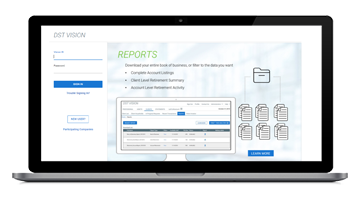What’s a unified managed account?
Unified managed accounts (UMAs) have become hugely popular among investors and advisors. But what are UMAs? Why are they so in demand and are they right for you? We take a closer look.

A unified managed account (UMA) is a professionally managed vehicle that can house many different types of investments all in a single account. These investments can include separately managed accounts (SMAs), model portfolios, mutual funds, exchange-traded funds (ETFs), individual stocks, and bonds. UMAs are typically offered through an advisory program, where all assets within the UMA are managed under a single, all-inclusive advisory fee.
The main aim of a UMA is to provide investors with greater flexibility, transparency, and efficiency in managing their investments. Rather than maintaining separate accounts for different investment strategies or asset classes, a UMA allows investors to consolidate their holdings into a single account. This approach provides a comprehensive overview of their investment portfolio, while also simplifying administrative tasks, enhancing reporting capabilities, and making investment decision-making more effective.
UMAs have evolved from the popularity of SMAs, which also offer investors a professionally managed account. However, SMAs generally consist of a single targeted strategy, so an investor who wanted to invest across multiple strategies would likely have to open multiple SMAs.
Like SMAs, interest in UMAs has grown rapidly. In 2008, the share of UMA assets accounted for just 4.1% of the total managed account industry assets. By the close of 2021, UMAs made up 22.2% of the total managed account industry, with the share of assets growing each year since 2009. Net flows into UMAs reached $246 billion in 2021, with total assets now at $2.4 trillion. They’re expected to increase by 24.6% over the next three years.1
What can UMAs be used for?
Source: John Hancock Investment Management, 2023.
What are the benefits of investing through a UMA?
The explosion in popularity has been driven in part by the benefits UMAs can offer advisors, not least in terms of improved efficiency and increased productivity. The managed account structure removes many of the tasks and administrative burdens attached to traditional advisory accounts (e.g., contacting clients for trade approvals and the associated note-taking), which allows advisors to focus on other aspects of their practice such as financial planning, marketing their business, or meeting with clients.
Furthermore, the outsourcing of security selection decisions for SMA models/model portfolios—including trading, account rebalancing, cash management, and program fee collection—can translate into potentially hundreds of saved hours over the year. By using similar UMA account holdings, advisors are also able to create a more consistent client experience across their practice.
UMAs largely target high-net-worth individuals who can afford to invest in multiple underlying products. For example, SMA models typically have a minimum investment requirement of around $100,000. If clients want to invest in more than one SMA model, they will generally need a few hundred thousand to invest. Minimum thresholds in UMAs are typically higher, falling anywhere between $500,000 and $1 million.
UMA standards vary by provider, and investors will typically sign an agreement detailing the management of the account, its fees, and its allowable investments and structuring. UMA investors typically pay annual management fees based on total assets under management. Fees usually decrease with greater assets under management but may range from 1.50% annually to 3.00%.
In return, UMAs offer a number of benefits to investors, particularly for those who don’t want to be involved in day-to-day decisions around trading securities in their account. By opting for a UMA, investors can delegate trading discretion to a registered portfolio manager. UMAs also provide clients with superior reporting, typically provided on a quarterly basis. This allows advisors to have more constructive conversations with their clients regarding asset allocation decisions, rebalancing, and overall risk/return objectives.
Investing through a UMA
UMAs are generally offered by the same providers who offer SMAs. Typically, the provider will work with the investor to integrate all of the assets into one account. Once the assets have been aggregated, the provider will work with the client in several ways. The UMA provider can examine the total portfolio for a comprehensive plan. This can include an overlay strategy that seeks to manage the portfolio from a targeted asset allocation diversification approach.
Often, a UMA provider will analyze the portfolio to ensure it conforms with modern portfolio theory given the comprehensive, efficient frontier for which the combined assets create. UMA providers may also offer investors new options with affiliated companies and products that might help clients better align their total portfolio for risk/return optimization.
UMA providers can offer clients more streamlined reporting on their investments, with greater support for comprehensive tax planning. They can also work with clients to determine a rebalancing schedule that fits their overall investing strategy.
A unified approach, but not for everyone
UMAs have become an increasingly popular option for investors who prefer a simplified, streamlined approach to managing their investments, allowing them to combine different products into a single account. They also offer benefits to advisors, by freeing up a considerable amount of time they previously spent on administrative tasks that could be better spent on other elements of client service.
UMAs aren’t for everyone, however, and come with several barriers to entry. Investors should carefully consider the fees, features, and overall service before choosing a provider.
1 The Cerulli Report: U.S. Managed Accounts 2022, Cerulli Associates, 2022.
Important disclosures
Important disclosures
This material is for informational purposes only and is not intended to be, nor shall it be interpreted or construed as, a recommendation or providing advice, impartial or otherwise. John Hancock Investment Management and our representatives and affiliates may receive compensation derived from the sale of and/or from any investment made in our products and services.
The views presented are those of the author(s) and are subject to change. No forecasts are guaranteed. This commentary is provided for informational purposes only and is not an endorsement of any security, mutual fund, sector, or index. Past performance does not guarantee future results.
Diversification does not guarantee a profit or eliminate the risk of a loss.
UMAs and SMAs are intended for HNW, investment-savvy individuals and may not be appropriate for all investors.
SMA3272419





